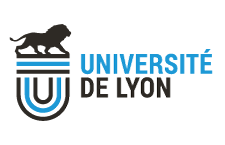Unités de recherche
Partenaire 05: Laboratoire de Physique Corpusculaire
Physique
- Adresse :
- Laboratoire de Physique Corpusculaire de Clermont
Pole Physique pour la Santé et l'environnement (PPSE)
24 avenue des Landais
BP 80026
63177 Aubière Cedex - Sur Internet :
- http://clrwww.in2p3.fr/www2008/spip.php?article256
- Tutelle :
- UBPC2 - CNRS
Organisation
Représentant: Gérard MONTAROU
The LPC is a joined research unit (UMR 6533) from the “Université Blaise Pascal Clermont 2” and the “Institut National de Physique Nucléaire and Physique des Particules” (IN2P3) of CNRS. The activities of LPC are oriented toward experimental fundamental physics, but the laboratory is also strongly engaged in health applications through two different research groups.
The “AVIRM” team (“Application of the interaction of radiation with material”) research group (Project Leader: Gerard Montarou) involves physicists and engineers in the development of innovative techniques at the interface between physics, biology, and medicine. The AVIRM group activity splits into two different domains.
On-line Dose Monitoring and Quality Assurance of the treatments in hadrontherapy. Accurate Quality Assurance tests need developing novel imaging modalities that are related to the dose deposition and allow assessing the treated volume as well as deriving reliable indicators of the delivered dose. The AVIRM group concentrates on in-line and in-real-time detection of positron emitting isotopes produced during therapeutic exposures to hadrons nuclides. The power of the method depends on limiting the region of interest by a measurement of the time difference between the two co-linear gammas, a technique called Time-of-Flight (TOFPET). The requirement on TOF, as well as the constraints that the control system must operate in real-time and in-beam conditions, implies the use of innovating instrumental technologies. These R&D projects are supported by the ANR Gamhadron and the European Seventh Framework Programmes Envision and Entervision in cooperation with the IPNL CAS-Phabio Group.
The development of biophysics’ models for the analysis of cellular irradiation with low and high LET particles. Since 2006 the AVIRM Group was implied within collaboration GEANT4 DNA to extend the validity at microscopic scale (low energy threshold) of the GEANTt4 toolkit for the modelling of the early physical stage of the cellular irradiations. Therefore the activity of the group was dedicated to the study of biophysics’ models for the analysis and the interpretation of cellular irradiations, using the framework of the microdosimetry. Such models will be included in the treatment planning systems used in hadrontherapy. For all these activities, the AVIRM group of the LPC is already collaborating with LRCM for cellular irradiation at GANIL and IPNL CAS-Phabio Group for developments of biophysics’ models.
The PCSV team (Computing Platform for Life Science, Leader: Lydia Maigne) research group at LPC applies the computing methods and tools designed for high-energy physics to the fields of life sciences and health. The team is involved in two international collaborations for the development of Monte Carlo simulations dedicated to fight against cancer (GATE and GEANT4 DNA). In the framework of the GEANT4 DNA collaboration, the PCSV team participates to the development of new geometrical models of DNA for different conformations and validates the physical models concerning photon, electron and proton interactions. G4-DNA simulations are compared with experimental data obtained after irradiation using medical beam facilities. The team is in charge of merging GEANT4-DNA classes to the GATE Monte Carlo platform.
The team develops all the tools necessary to share medical data on cancer using a grid infrastructure. Given the complexity of these new technologies and therefore the complex dose calculation to perform, Monte Carlo methods could answer the needs for patient-specific treatment quality. Therefore, the improvement and the validation of the GATE/GEANT4 platform for radiation therapy (external and internal) using photons, electrons and protons focus on:
1°) The modelling of new radiation therapy devices involving very small radiation field combined with modulated intensity such as arctherapy.
2°) The microdosimetry involved by internal radiation therapy treatments using new specific radiopharmaceutics.



 Accueil
Accueil PRES LYON
PRES LYON Nous contacter
Nous contacter Archives
Archives WebAdmin
WebAdmin